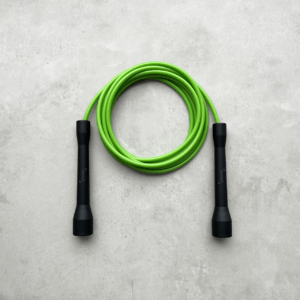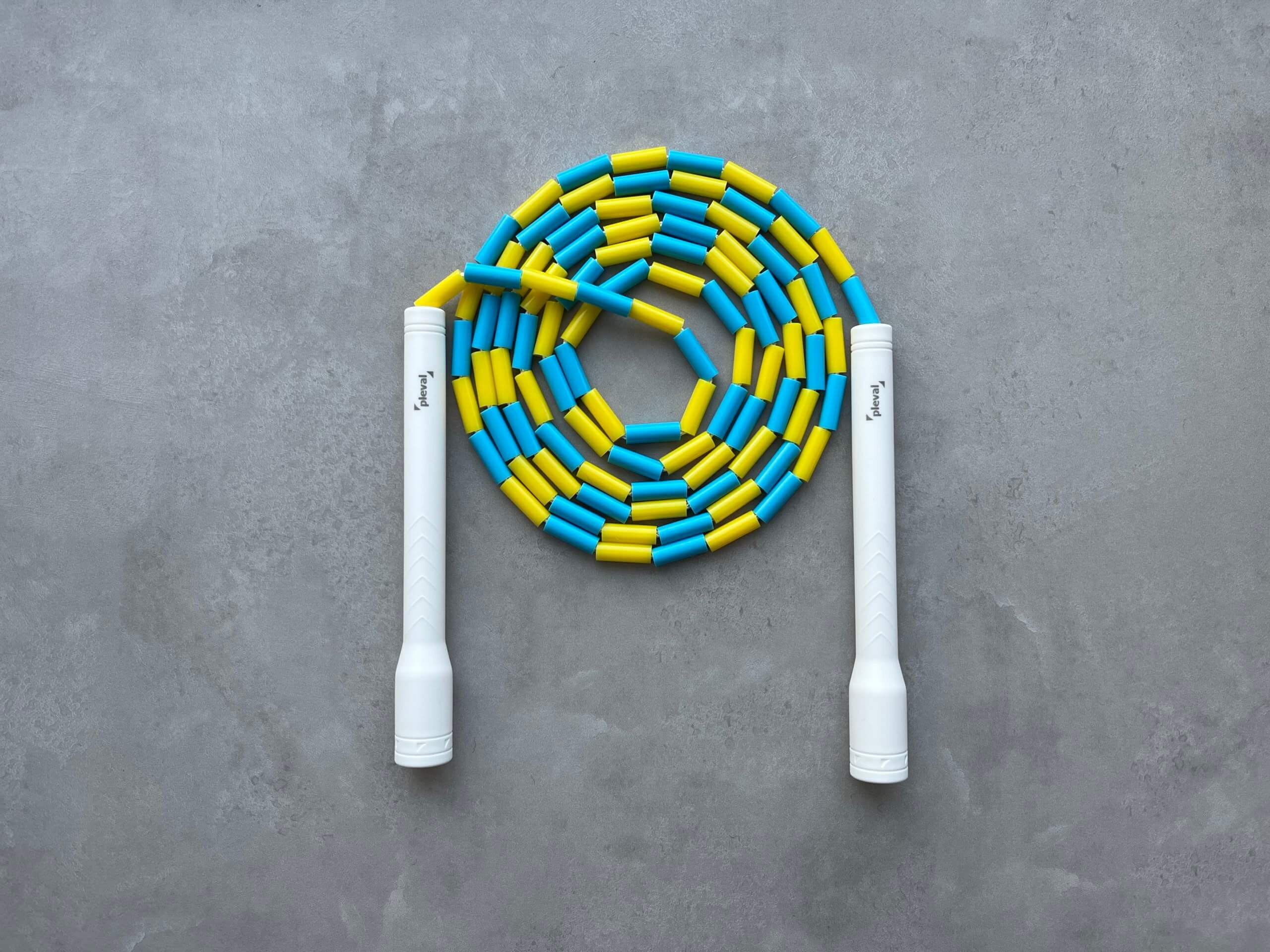What is a jump rope?
Jump rope, also known as a skipping rope, is a length of flexible cord, often with handles at the ends, used for the purpose of skipping or jumping over it as it swings over one’s head and under their feet in a rhythmic motion. Jump ropes are commonly used for exercise, fitness, and recreational activities, promoting cardiovascular health and agility.
The main application field of the jump rope
The main application field of the jump rope is fitness and exercise. Jump ropes are widely used for cardiovascular workouts, agility training, and improving coordination and endurance. They are commonly found in fitness centers, schools, and as a portable and cost-effective exercise tool for individuals looking to engage in physical activity and stay healthy. Additionally, jump ropes are used in sports and competitive settings, such as boxing and double dutch, as a training and skill development tool.
The development trend of the jump rope industry
The jump rope industry is experiencing several trends and developments:
Technology integration: With the integration of technology, skipping rope is becoming more and more advanced. Equipped with sensors and Bluetooth connectivity, smart jump ropes allow users to track their training and progress through smartphone applications.
Customization and variability: Manufacturers offer a variety of jump rope designs, lengths, and materials to meet different fitness needs and preferences. Customization options, including adjustable handles and rope lengths, are becoming increasingly common.
Sustainability: Environmentally friendly materials and sustainable production methods are becoming increasingly important in the industry. Some jump rope manufacturers are choosing environmentally friendly materials and packaging.
Fitness Program: Incorporating skipping rope exercise into various fitness programs such as CrossFit, HIIT (High Intensity Interval Training), and home exercise programs is increasing the popularity of skipping rope in the fitness industry.
Health and wellness: Rope skipping is recognized for its health benefits beyond fitness. It is used to alleviate stress, mindfulness, and overall health, contributing to its attractiveness in the health industry.
Education and Youth Projects: Schools and youth organizations are incorporating rope skipping as part of physical education and extracurricular activities. This is cultivating the next generation’s interest in skipping rope.
Improving athletic performance: Rope skipping is increasingly being used in sports training programs to improve athletes’ flexibility, speed, and endurance.
What are the classifications of jump rope?
Jump ropes can be classified into several categories based on various criteria, including their design, purpose, and features.
Basic Jump Ropes: These are standard, no-frills jump ropes with simple handles and a basic rope.
Speed Ropes: Speed ropes are designed for quick rotation and are often used in speed and agility training. They have lightweight handles and thin, fast-spinning ropes.
Weighted Ropes: Weighted jump ropes have additional weight in the handles or the rope itself, providing resistance during workouts. They are used to increase the intensity of workouts and build strength.
Adjustable Ropes: Adjustable jump ropes allow users to change the length of the rope to suit their height or exercise goals. They are versatile and suitable for various users.
Beaded Ropes: Beaded jump ropes have plastic beads or segments along the length of the rope. They are often used in rhythmic and double dutch jump rope routines.
Cable Ropes: Cable jump ropes feature thin, steel cables covered with a protective coating. They are designed for high-speed, precision jumping and are commonly used in competitive and CrossFit settings.
Smart Ropes: Smart jump ropes are equipped with sensors and Bluetooth connectivity to track jump count, calories burned, and workout progress via smartphone apps.
Segmented Ropes: Segmented jump ropes have sections or beads along the rope’s length, offering visual cues for timing and rhythm in double dutch or group jumping.
Professional and Competition Ropes: These jump ropes are designed to meet specific requirements and regulations for competitive jump rope sports and events.
Children’s Ropes: Jump ropes designed for children often feature shorter lengths and colorful designs, making them suitable for kids’ fitness and play.
How to choose the jump rope manufacturer with the best quality?
To select the jump rope manufacturer with the best quality, consider factors such as reputation, materials used, craftsmanship, and customer reviews. Look for manufacturers with a track record of producing durable and reliable jump ropes. Pay attention to the materials, as high-quality ropes often use strong and lightweight materials. Check for craftsmanship and precision in handle and rope design. Customer reviews and testimonials can provide insights into the quality and performance of the jump ropes. Additionally, inquire about warranty and return policies, as they can indicate a manufacturer’s confidence in their product quality.
How can jump rope manufacturers improve production quality?
Jump rope manufacturers can enhance production quality by implementing several key practices, including:
Quality Control: Implement stringent quality control measures at every stage of production to identify and rectify defects or inconsistencies in materials, design, and workmanship.
Material Selection: Use high-quality and durable materials for ropes and handles, ensuring they can withstand wear and tear, maintain their integrity, and resist breakage.
Craftsmanship: Invest in skilled craftsmanship to assemble jump ropes with precision, ensuring that handles are comfortable, and ropes are evenly balanced and well-finished.
Testing and Certification: Subject jump ropes to rigorous testing, adhering to industry standards and certifications to guarantee their performance and durability.
Feedback Loop: Continuously gather feedback from customers and users to make improvements and refine product designs, addressing any issues promptly.
Innovative Design: Explore innovative designs and features that enhance user experience and functionality, whether it’s smart technology integration, adjustability, or ergonomic handles.
Supplier Relationships: Develop strong relationships with suppliers to secure high-quality materials and components, as well as favorable pricing.
Employee Training: Invest in employee training to ensure that production processes are carried out with precision and adherence to quality standards.
What production equipment do jump rope manufacturer need?
Jump rope manufacturers require a range of production equipment, including:
Extrusion Machines: These are used to create the rope material, often made of PVC, nylon, or other materials, in various diameters.
Cutting Machines: These machines are used to cut the ropes to the desired length and ensure consistency in rope size.
Handle Molding Machines: Handles are typically made of plastic or foam and are shaped using molding machines.
Assembly Stations: These workstations are equipped with tools and fixtures for assembling handles, ropes, and any additional components.
Quality Control Equipment: Testing and inspection tools are essential for ensuring the quality and consistency of the jump ropes.
Packaging Machinery: Machines for packaging the finished jump ropes, which may include sealing, labeling, and boxing equipment.
Printing and Branding Equipment: For adding logos, designs, and product information to the jump ropes.
What are the services of jump rope manufacturer?
Jump rope manufacturers typically offer a range of services, including:
Customization: Tailoring jump ropes to meet specific length, material, and design requirements to suit individual and bulk orders.
Quality Control: Ensuring that jump ropes meet quality standards through rigorous testing and inspection.
Product Development: Collaborating with clients to create innovative jump rope designs and features.
Bulk Production: Manufacturing jump ropes in large quantities for commercial and wholesale orders.
Private Labeling: Providing private labeling and branding services for clients looking to market jump ropes under their own brand name.
Packaging: Offering various packaging options, from bulk packaging to retail-ready packaging.
Consultation: Offering expert guidance and consultation on jump rope selection and customization.
Warranty and Support: Providing customer support and warranty services to address issues and inquiries.
What services are included in the jump rope manufacturer’s after-sales service?
Jump rope manufacturers typically offer a range of after-sales services, including:
Warranty: Providing warranties for their products to cover defects and issues within a specified period.
Repair and Replacement: Assisting customers in repairing or replacing faulty or damaged jump ropes under warranty.
Technical Support: Offering technical assistance and guidance for using, maintaining, or customizing jump ropes.
Customer Support: Addressing inquiries and concerns related to jump rope products and services.
Refunds and Returns: Handling returns and refunds for customers dissatisfied with their purchase, within the stipulated return policy.
Bulk Order Assistance: Assisting businesses and bulk buyers in placing and fulfilling large orders efficiently.
Product Information: Providing detailed information about product specifications, materials, and care instructions.
Customization Support: Collaborating with clients on personalized jump rope designs and customization.





